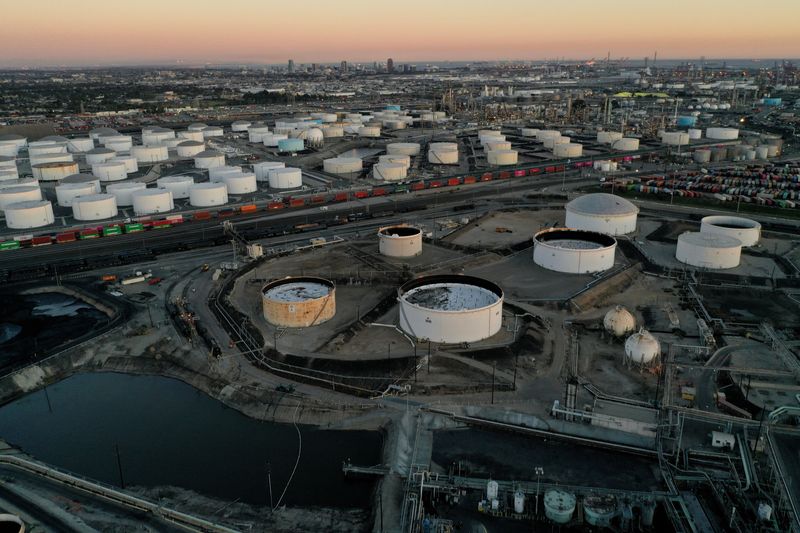
By Scott DiSavino
(Reuters) -Oil prices see-sawed in a tight range near a two-week low after dropping about 5% over the past two sessions as investors absorbed OPEC’s latest downward revision for demand growth, a stronger U.S. dollar and disappointment over China’s latest stimulus plan.
Brent futures rose 16 cents, or 0.2%, to $71.99 a barrel by 10:57 a.m. EST (1557 GMT), while U.S. West Texas Intermediate (WTI) crude rose 12 cents, or 0.2%, to $68.16.
On Monday, both crude benchmarks settled at their lowest since Oct. 29.
“A normal tendency in crude following a sharp drop would be a recovery back to about the middle of the prior day’s range within a couple of sessions,” analysts at energy advisory firm Ritterbusch and Associates said in a note.
OPEC cut its forecast for global oil demand growth in 2024 and also lowered its projection for next year, marking the producer group’s fourth consecutive downward revision.
The weaker outlook highlights the challenge facing OPEC+, the Organization of the Petroleum Exporting Countries and allies such as Russia. This month, the group postponed a plan to start raising output in December against a backdrop of falling prices.
“With China’s demand remaining lackluster, supply-side tinkering by OPEC is not having the desired impact other than maintain Brent price floor at $70,” said Gaurav Sharma, an independent oil analyst in London.
OPEC said world oil demand would rise by 1.82 million barrels per day (bpd) in 2024, down from growth of 1.93 million bpd forecast last month.
The group also cut its 2025 global demand growth estimate to 1.54 million bpd from 1.64 million bpd.
OPEC remains at the top of industry estimates and has a long way to go to match the International Energy Agency’s far lower view.
OPEC’s forecast on robust growth in China is “at odds with other forecasters, who have considerably reduced their end-2024 estimates on China’s poor macroeconomic performance and disappointing fiscal stimulus,” said Harry Tchilinguirian, head of research at Onyx Capital Group.
On Friday, Beijing unveiled a 10-trillion-yuan ($1.4-trillion) debt package to ease local government financing strains. Republican Donald Trump, who won the U.S. presidential election, has threatened more tariffs on Chinese goods.
But analysts said China’s plan fell short of the amount needed to boost economic growth.
U.S. DOLLAR, GERMAN SENTIMENT
Also weighing on oil prices, the U.S. dollar rose to a four-month high versus a basket of currencies as investors kept piling into trades seen benefiting from Trump’s victory.
A stronger greenback makes oil more expensive in other countries, which can reduce demand.

In Germany, the biggest economy in Europe, investor morale clouded over this month, an economic research institute said, as Trump’s election and the collapse of the government in Berlin unleashed added uncertainty on Germany’s already ailing economy.
Protectionist policies from the incoming U.S. administration will hamper global growth and Europe must be better prepared than in 2018, European Central Bank policymakers warned.
This post is originally published on INVESTING.




